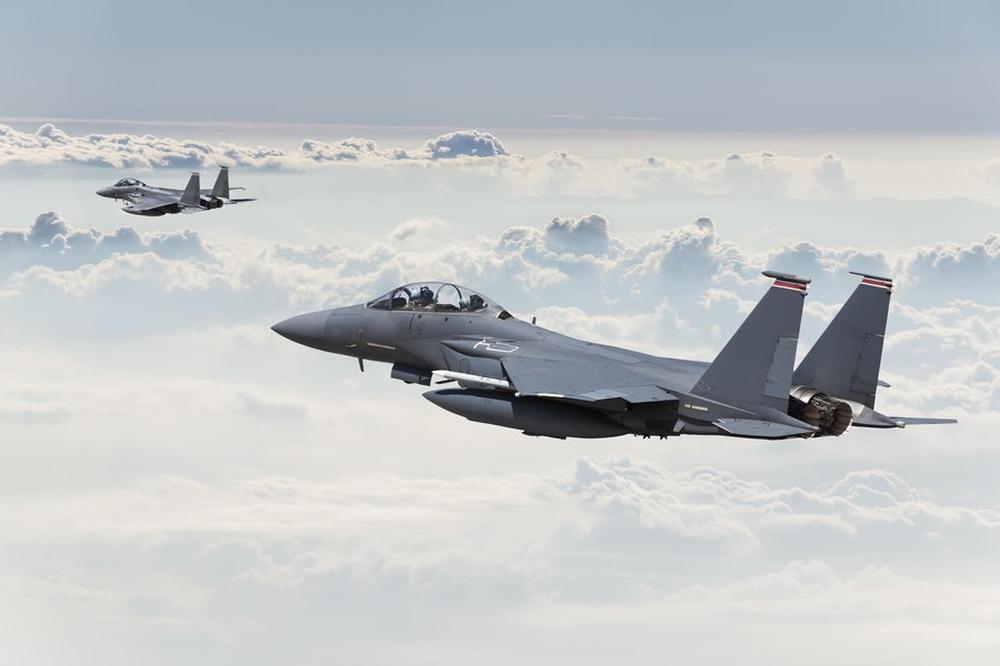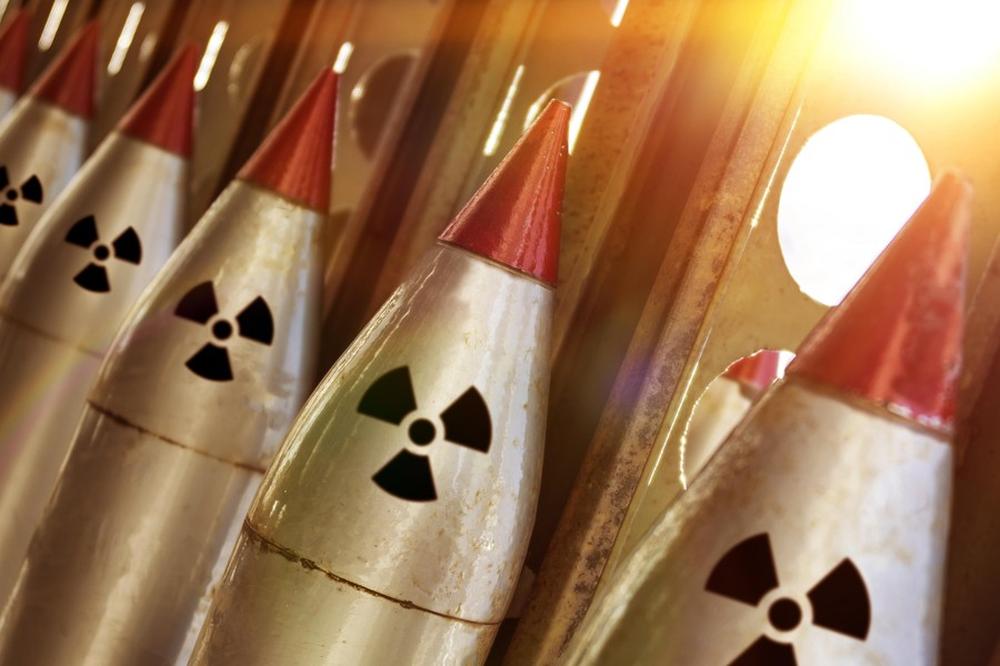- #Nuclear & Missile Issues
- #Security & Defense
- #US Foreign Policy

► The implications of the NPR for U.S. allies and partners—who rely on American extended deterrence for their security—are significant given that the document comprehensively details the conditions and principles behind the use of nuclear weapons.
► Even though there are growing voices within the United States that it should consult closely with allies, it is possible that this “consultation” refers to the U.S. ability to “convince” allies of its nuclear posture.
► Both the United States and allies must engage in close consultation and coordination with a more specific and clear agenda as it relates to extended deterrence.
There are ongoing discussions about the content and implications of the Biden administration’s soon-to-be-released Nuclear Posture Review (NPR). At the center of these discussions lie two concepts: the “sole purpose” and the “no-first use” policies. The implications of the NPR for U.S. allies and partners—who rely on American extended deterrence for their security—are significant given that the document comprehensively details the conditions and principles behind the use of nuclear weapons. This article aims to review the “sole purpose” and “no-first use” policies within the larger U.S. nuclear strategy and discuss their implications for U.S. extended deterrence.
First strike, pre-emptive strike, no-first use, sole purpose, and extended deterrence
Concepts involving nuclear strategy are oftentimes embedded with special meanings. For example, the concept of a “first strike”—in addition to the ability to pre-emptively launch a nuclear attack—refers to disarming an opponent’s ability to retaliate with nuclear weapons. The opponent’s ability to launch a “second strike” nullifies the initial attacker’s first strike capability. When the Soviet Union developed a second strike capability during the Cold War and, thereby, made mutual assured destruction (MAD) a reality, the United States’ first strike capability became irrelevant. In the post-Cold War period, the concept of preemptive strike became an important component of the United States’ extended deterrence.
The idea of a pre-emptive attack is defensive in nature in that it provides justification to the use of force in responding to an imminent and present threat. It distinguishes itself from the concept of “preventive attack.” This concept is particularly important for the United States negative security assurance because it imposes the possibility of a nuclear pre-emptive attack against the target of extended deterrence and, thereby, enhances the United States’ nuclear threat.
However, this concept has no significance against traditional nuclear states such as Russia and China. The United States will not launch a pre-emptive attack against the Chinese or Russian counter-value targets, or non-strategic military targets. In addition, pre-emptive attacks that aim to disarm the opponent’s nuclear capacity can only succeed in “bolt out of the blue” attacks. Therefore, the possibility of Russia and China being at the receiving end of a U.S. pre-emptive nuclear strike remains extremely low.
On the other hand, a “no first use” refers to a promise not to launch a nuclear attack under any circumstances (that include pre-emptive strike, first strike, or retaliation against conventional attacks). Among the nuclear states or nuclear-armed states, only China maintains an official policy of “no first use” while others have left open the door for nuclear first strike in case of military conflicts.
“Sole purpose” implies that the United States will limit its use of nuclear weapons only in terms of “deterrence by punishment.” Former President Trump’s NPR had opened the option for use of nuclear weapons in extreme cases that require the protection of vital interests of the United States, its allies and partners. These cases would involve retaliations against pre-emptive attacks and/or retaliations against conventional, bio-chemical or cyber attacks. President Biden has emphasized that “the sole purpose of our nuclear arsenal is to deter—and, if necessary, retaliate for—a nuclear attack against the United States and its allies.” The 2021 U.S. Interim National Security Strategic Guidance also outlined U.S. commitment to “reduce the role of nuclear weapons in [U.S.] national security strategy.”
Against this idea, arguments have been made that President Biden’s inclusion of a “sole purpose” clause in the NPR would damage the reliability of U.S. extended deterrence in response to various security threats. Although “sole purpose” and “no first use” are not completely the same, critics have opposed the inclusion of the “sole purpose” clause because it goes against the core of U.S. nuclear strategy—ambiguity—and since the threat of a nuclear pre-emptive strike can deter conventional attacks from potential adversaries.
Implications for extended deterrence
The United States’ nuclear strategy is composed of an open nuclear policy and a weapons employment plan. The “sole purpose” clause, if included in the NPR, implies that the United States is re-affirming the reason for the possession of nuclear weapons. Practically, the United States can only consider nuclear weapons as a deterrence against a nuclear attack. Therefore, a “sole purpose” clause in the NRP is not unprecedented and had been tried by President Obama as well. Obviously, a gap between a nuclear policy and the actual use of nuclear weapons could exist. This leads to the question, can the United States launch a retaliatory nuclear attack against counter-value targets when its deterrence fails? And will such an attack have any significance?
Despite these concerns, the reason behind President Biden’s effort to include a “sole purpose” clause in the NPR is to raise the bar involving the use of nuclear weapons and, by doing so, enhance stability among the nuclear power states. Moreover, by reducing the role of nuclear weapons, the United States may be considering the opportunity cost of nuclear weapons and improving its capacity to deal with more realistic military scenarios involving conventional clashes with Russia or China.
Similar to the Obama era, the inclusion of a “no first use” policy in the NPR—which looks to limit the pre-emptive use of nuclear weapons—seems unlikely given domestic resistance. Similar to the recently released Global Posture Review, the upcoming NPR is unlikely to contain a new strategic shift in U.S. nuclear posture. Rather, it is likely to be the product of a bureaucratic and political compromise.
In terms of U.S. extended deterrence, Korea must now pay attention to the weapon systems. During the Obama administration, extended deterrence consisted of multi-level weapons systems including the nuclear umbrella, missile defense, and conventional deterrence. Since then, the W80-0 nuclear warheads, which had been one of the two pillars of U.S. extended deterrence, in Tomahawk cruise missiles were replaced by conventional warheads. During this process, there were speculations regarding the lack of close coordination between United States and Korea. The Trump administration tried to go back to rearming the nuclear warheads on its cruise missiles but failed due to congressional disapproval. As such, the actual capacity of U.S. extended deterrence is the 130 or so B61 nuclear bombs located in the U.S. Air Force base in New Mexico. The fielding of its improvements, the B61-12, is experiencing delay caused by production problems. Due to the importance of tactical nuclear weapons for the reliability of extended deterrence, we must pay close attention to how the U.S. develops and stations its weapons systems.
History teaches us that American decisions regarding the placement and operation of its nuclear weapons will depend on its strategic considerations. Even though there are growing voices within the United States that it should consult closely with allies, it is possible that this “consultation” refers to the U.S. ability to “convince” allies of its nuclear posture. Both the United States and allies must engage in close consultation and coordination with a more specific and clear agenda as it relates to extended deterrence.
Dr. KO, Bong-Jun is an associate professor of the Department of Political Science and Diplomacy at Chungnam National University, Korea and also serves as Chair of Military Studies in the Graduate School of Peace and Security Studies there. Previously, he worked for the Jeju Peace Institute, Korea, as an associate research fellow. He earned his Ph.D. from the University of Notre Dame, USA. Dr. Ko’s main research area is international security with emphasis on U.S. foreign/security policy. His recent publications include “Future Warfare, U.S.-China competition in Autonomous Weapons, and Korea”(in Korean 2021); “Korea’s Diplomacy in the First Half of the 1980s: the Advent of Complex Realist Security Policies”(in Korean 2020); “The South China Sea and the U.S.’s Option: Continuity and Change”(in Korean 2019); “Damage Limitation and Deterrence: Theoretical and Practical Implications of the Deployment of a THAAD battery in South Korea”(in Korean 2017, among others. He received his MA in Political Science from Kent State University, USA and his BA in International Relations from Seoul National University, Korea.

